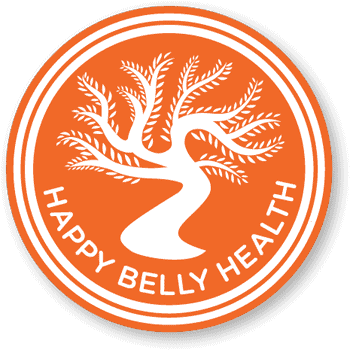
Why is Vitamin D the happy supplement?
We are meant to be happy and enjoy sunshine. Sunshine is where we get our vitamin D. Just 10 minutes in the sun can give us about 10,000 IUs of the happy supplement. And after a nice exposure like that, you’ll feel happy. It’s been known that low levels of vitamin D are associated with depression. And most of us can understand the experience of low mood during darker months when there is less sunlight or just being indoors too long.
So now that you have an understanding of vitamin D’s impact on your ability to feel happy, let’s get into the information around just how much you need. And Vitamin D isn’t only to help you feel happy, we’ll also discuss other risk factors associated with low Vitamin D.
How much of the happy supplement do we need?
From adorable infants through to our beloved elderly family, everyone should have his or her vitamin D level checked at least once a year, preferably twice. There is widespread debate in the medical community about “optimal” Vitamin D levels, and as with most nutrients, the answer likely varies for each unique person given their genetics, environment, lifestyle, and existing health challenges. However, clinical research is starting to uncover that significantly elevated Vitamin D might have as much negative consequence as too little.
When we discuss vitamin D, we are considering two different forms: active (1-25,OH aka calcitriol) and inactive/precursor (25-OH calcifediol). These can both be measured via serum and used together to understand the body’s overall vitamin D status. Often practitioners rely only on 25-OH, but this can appear artificially low because the body may be using it up to make more 1-25,OH, such as during an inflammatory or disease state. Subsequently, a practitioner may make the decision to supplement a person with vitamin D based on inaccurate overall information about that person’s actual vitamin D status. With this distinction, we can attempt to maintain inactive vitamin D stores in the 40-60 ng/mL range. Lower levels are associated with a variety of types of immune deficiency. However, appreciably higher levels can be immunosuppressive; this may be useful short-term in the case of autoimmune or other aggressive, inflammatory disease (remember that Vitamin D is a steroid hormone). If there is an infectious component of disease root causes, then Vitamin D will likely need to come down eventually to the more moderate level in order to allow optimal immune functioning to eradicate root causes.
Below are conditions that have been associated with serum vitamin D (25-OH) levels as noted in various clinical studies:
< 10 ng/mL Notably deficient
< 15 ng/mL Risk of rickets
< 20 ng/mL 75% greater risk of colon cancer
< 30 ng/mL Suboptimal/Deficient
Increased calcium loss from bones, osteoporosis Poor wound healing.
Increased muscle pain Increased joint and back pain Greater risk of depression Increased diabetes risk Increased schizophrenia risk Increased migraines
Increased autoimmune disease (lupus, scleroderma, thyroiditis) Increased allergies
Increased preeclampsia risk Increased systemic inflammation Increased risk of certain viral infections
< 34 ng/mL Twice the risk of heart attack
< 36 ng/mL Increased high blood pressure
< 40 ng/mL Three times the risk of multiple sclerosis
40–60 ng/mL Likely Optimal levels, varying by individual
Support for Cancer Treatment
50 ng/mL 50% reduction in breast cancer, decreased risk of all solid cancers 70-80 ng/mL
Slowing of cancer growth in patients with diverse types of cancer
100 ng/mL Increased risk of toxic symptoms (e.g. hypercalcemia),
especially if not matched with adequate Vitamin K2 and magnesium intake. Vitamin A is also required.
Natural Production of Happy Vitamin D
Your skin makes vitamin D from a precursor to cholesterol when it is exposed to a pinking dose of sunlight. How much vitamin D you make depends on your age, your genetics, how much skin is uncovered, and your skin tone. Regardless of sunscreen utilization, the skin may still be capable of synthesizing vitamin D and will typically make about 10,000 to 15,000 International Units of vitamin D in one pinking sun exposure, on average. The darker your skin, the more sun exposure you need to make enough vitamin D.
Depending on where you live (latitude), you may only get enough radiation from the sun for vitamin D production between May and October (e.g. New England in the U.S.; you may consider using an app such as D-Minder, which can help you determine the optimal time to be outside for vitamin D given your location.). These populations definitely need supplement support from October through April. Genetic variants can render even those living year- round in sunny Arizona and Florida with rock-bottom levels. Testing is the only way to know your needs for sure. We also have varying levels of Vitamin D receptor sensitivity, so paying attention to your symptoms and overall wellness is also key to understanding when your body needs support. And don’t forget to check your happy meter!
Vitamin D Supplementation Doses
We each have unique physiology. Some of us can metabolize and retain Vitamin D quite well while others require very large doses to maintain even baseline healthy levels. Make sure you check your levels after no more than 2-3 months of supplementing with a given IU level per day. It’s also key to make sure your magnesium levels are replete before starting a Vitamin D supplement (look for RBC magnesium to be at least in the upper half of the reference range, ideallyin the upper third!).
Normal dosing of vitamin D depends on your blood levels and your medical history. Those with impaired digestion and absorption of fats (and thus fat-soluble vitamins) may also need sublingual forms or higher doses to gain optimal blood levels. Be sure to consult your practitioners about your unique needs.
Typical dosages for blood level ranges frequently recommended are as follows:
-
- < 10 ng/ml: Ramp up to 10,000IU D3 and take daily for 30 days then reduce to 4,000IU daily. Test in ~8 wks.
-
- 10-20 ng/ml: Ramp up to 8,000IU D3 and take daily for 2 weeks then reduce to 4,000IU daily. Test in ~8 wks.
-
- 20-30 ng/ml: Ramp up to 2,000IU D3 daily. Test in ~8 wks.
-
- 30-40 ng/ml: 2,000IU D3 daily.
Note: introducing Vitamin D via a “ramp up” is an important step. This can start with 1,000-2,000 IU/day and increase by another increment every 5 days or so. We ramp doses slowly to allow the body (and its Vitamin D receptors) to adjust gradually. We also recommend avoiding Vitamin D2 fortification in processed foods or as a vitamin D prescription (this inactive form takes up receptors that we want active Vitamin D to have available to use and thus drive cellular effects!).
In breastfeeding women, 6,400IU supplemental D3 daily has been researched to meet the vitamin D needs of both mother and baby, without having to supplement the baby separately. However, it is still recommended to confirm that your own 25-OH levels are within a healthy range at this amount, and adjust the dosage accordingly.
The body uses nutrients in a symphony – not solo. If you are taking a vitamin D supplement, adequate Calcium, Vitamin A, Vitamin K, and Magnesium intake are also required. Increasing Vitamin D increases the body’s need for all of these nutrients. Particularly for people trying to regain bone density, Vitamin K2 supplementation along with D is vital. Magnesium is required for the body to convert Vitamin D into its final, usable form; it’s also a very common nutrient deficiency, especially for those with cardiovascular disease or blood sugar control issues (e.g. diabetics). Please don’t hesitate to ask if you have questions about the most effective or reliable tests for gauging your sufficiency in these key nutrients or what forms of these nutrients are most bio-available, as food or supplements.
While vitamin D toxicity is not as common as many think, it is important to ramp up your dosage incrementally. Often, signs of “toxicity” are actually caused by depletion of one or more of the interdependent nutrients mentioned above. However, individuals with sarcoidosis, tuberculosis, hyperparathyroidism, lymphoma, and kidney disease should only take Vitamin D with physician’s involvement, given increased risk of their blood calcium level becoming too high.
Rechecking Your Vitamin D Level
Again, low Vitamin D, especially insufficient 1,25-OH, is a missed opportunity for your body. But too much of a good thing is not better! It is recommended that you recheck both 1,25-OH and 25-OH levels within 2-3 months after starting supplementation, depending on your medical and health condition (remember to stop taking vitamin D 3-4 days prior to the lab draw). Your practitioner may also suggest checking other lab tests such as blood/urine calcium, RBC magnesium, and parathyroid hormone level (PTH), especially if calcium level, metabolism, or use is a medical concern.
If you would like some customized support to delve deeper into your health and nutrition, let’s chat.
With appreciation to some information adapted from 2009 guidelines from The Institute of Functional Medicine. These are additional references for further reading which might be of interest:
Chris Kresser well summarizes some appropriate concerns about excess Vitamin D in this blog article: https://chriskresser.com/vitamin-d-more-is-not-better/ .
If you want a more scientific understanding of Vitamin D, this will perhaps be of interest from the Institute of Medicine: https://www.ncbi.nlm.nih.gov/books/NBK56061/#ch3.s11 .
An excellent podcast delving into the topic of optimal Vitamin D levels being moderate vs. high for most individuals: https://chrismasterjohnphd.com/blog/2016/11/22/dr-michael-ruscio-and-i-discuss-optimal-vitamin-d-status
This clinical write-up explores the topic of the synergistic activity between Vitamins D, A, and K: https://www.ncbi.nlm.nih.gov/pubmed/17145139 .
Insight into the role of high Vitamin D as immunosuppressive (especially of the innate immune system): https://www.sciencedaily.com/releases/2008/01/080125223302.htm
Discussion of vitamin D insufficiency during pregnancy and in infants and children: https://pubmed.ncbi.nlm.nih.gov/28179126/





